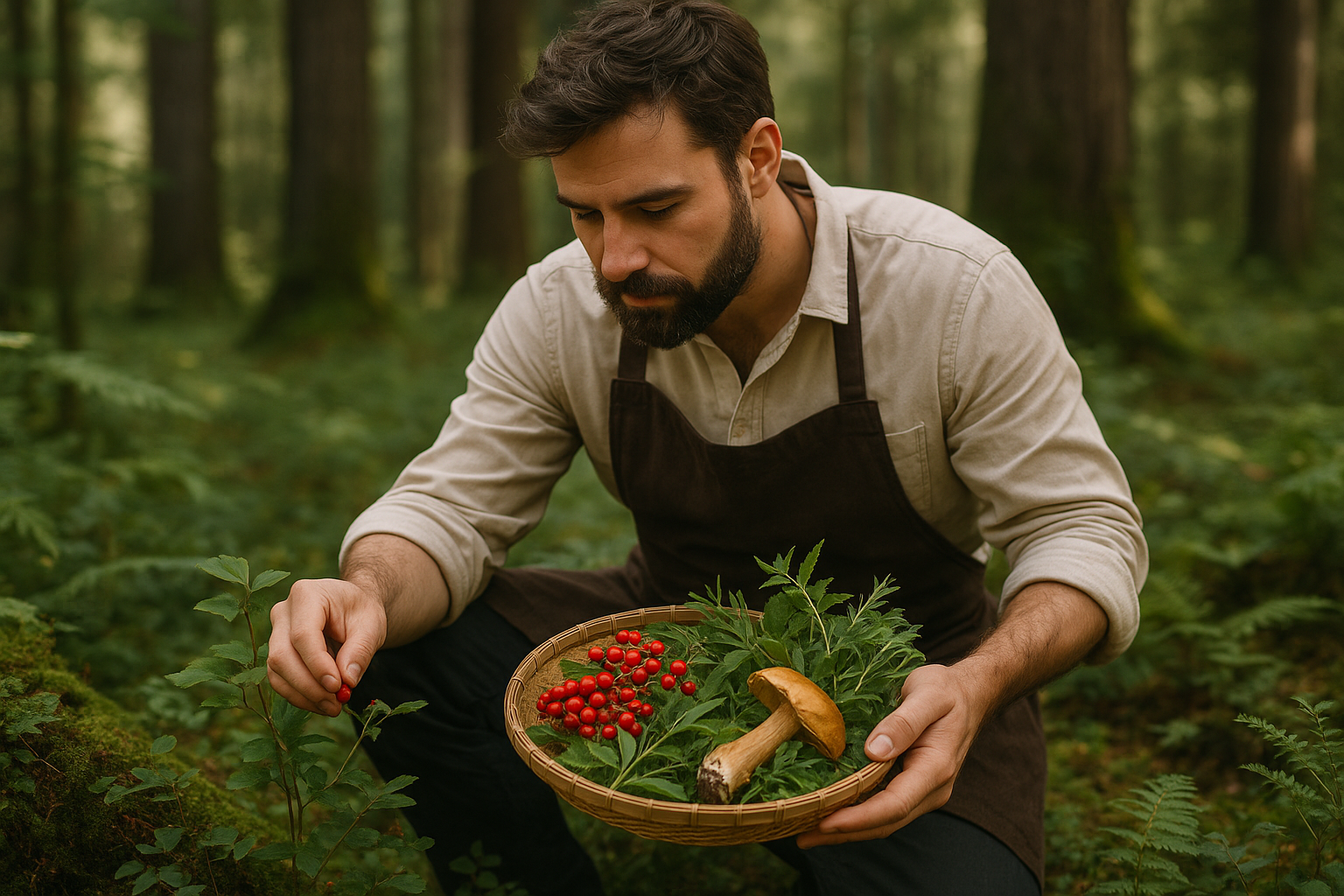"Foraging: Reconnecting with Nature Through Food"
In the contemporary culinary world, there is an ongoing return to Mother Nature's bounty as chefs and food enthusiasts increasingly embrace foraging. This practice of seeking and gathering wild food resources is not new – our ancestors did it. Yet, it's gaining a fresh wave of interest as we strive to understand and reconnect with our food's roots.

Rediscovering Our Roots
Foraging is more than merely a means of acquiring food; it is a way of life, a connection to our past, and a chance to embrace our natural surroundings. As we forage, we are reminded of our ancestors who lived off the land, cultivating a deep understanding and respect for the natural world. Today, we can rekindle this connection, discovering the rich flavors and unique textures hidden in our local landscapes.
The Bounty of the Wild
Wild food is diverse, seasonal, and often superior in taste and nutritional content to cultivated crops. From wild mushrooms, herbs, and berries to roots, shoots, and flowers, the variety of forageable foods is vast. Each season offers something different, pushing us to broaden our culinary horizons and experiment with new recipes.
The Art of Foraging
Foraging requires knowledge and respect for nature. It’s crucial to learn to identify edible plants, understand their growing patterns, and avoid overharvesting to sustain their populations. Foraging responsibly ensures we protect our natural resources while promoting biodiversity and contributing to ecological balance.
Foraging and Modern Cuisine
Chefs worldwide are incorporating wild foods into their dishes, creating innovative menus that highlight local, seasonal ingredients. This trend not only enriches the dining experience but also promotes sustainability. Restaurants offering foraged foods often tell a story about their locale, culture, and commitment to preserving the environment.
Foraging in Your Backyard
You don’t have to venture far to forage. Your backyard, local park, or nearby forest can be a treasure trove of edible plants. Start small by identifying a few edible species in your area and gradually expand your knowledge. Remember to respect nature and forage sustainably.
-
Did You Know? Foraging reduces food miles and carbon footprints, contributing to sustainability.
-
Tip: Invest in a good field guide for identifying edible plants in your area.
-
Fact: Many common ‘weeds’ like dandelion and nettle are edible and nutritious.
In conclusion, foraging offers a unique culinary adventure, allowing us to explore diverse flavors, learn about our natural environment, and reconnect with our food sources. As we embrace this practice, we are not just finding food; we are rediscovering our roots, appreciating nature’s bounty, and nourishing ourselves in the most natural way possible. Happy foraging!




